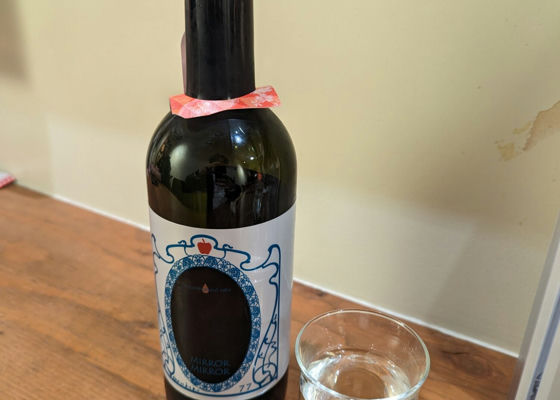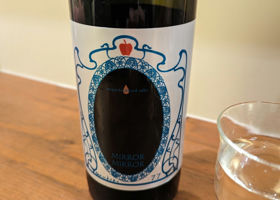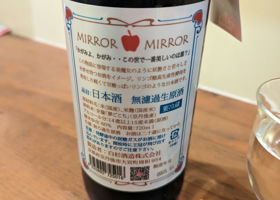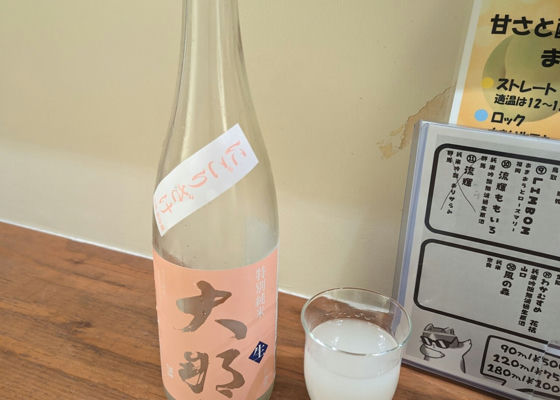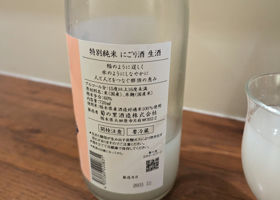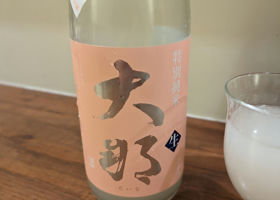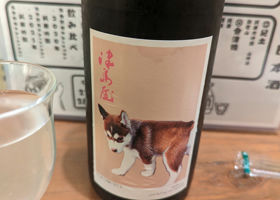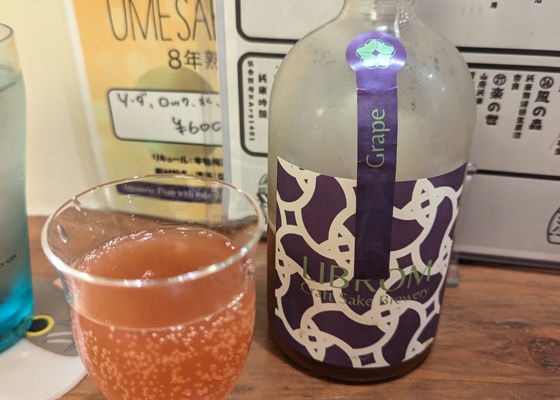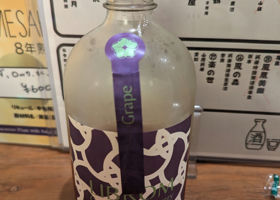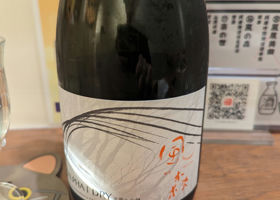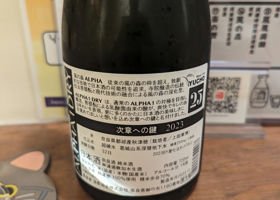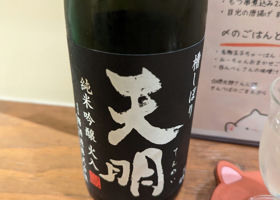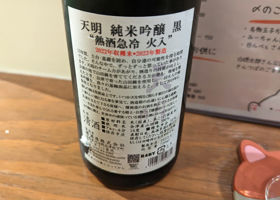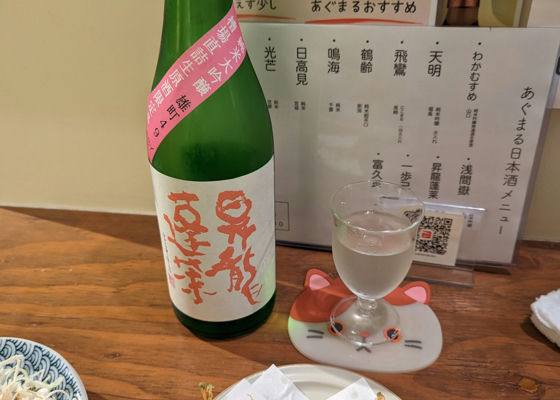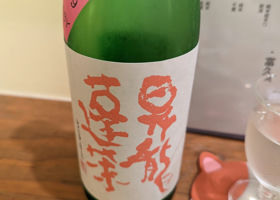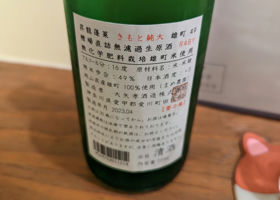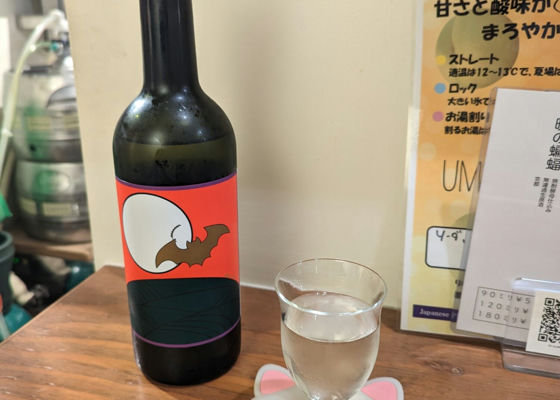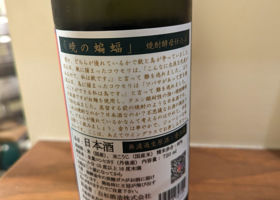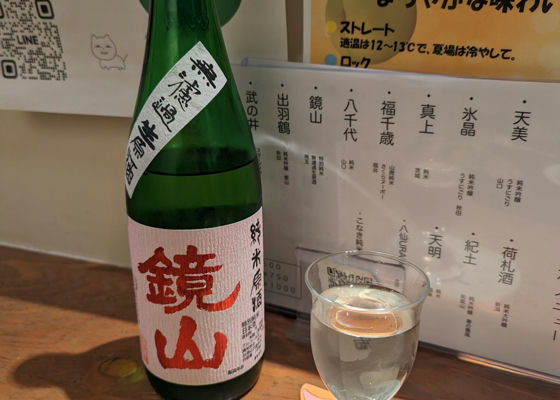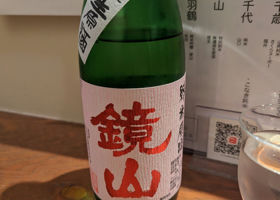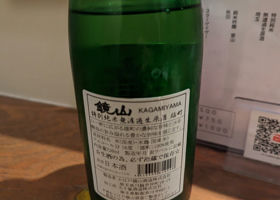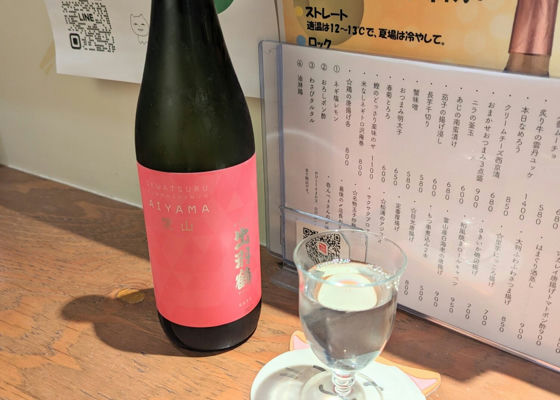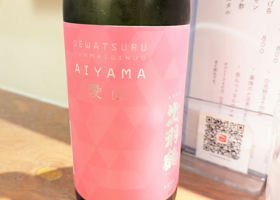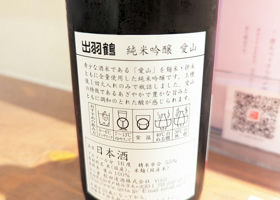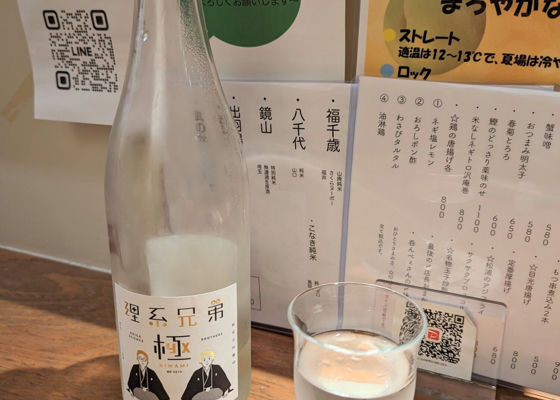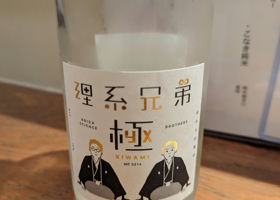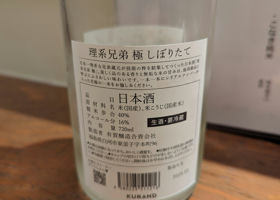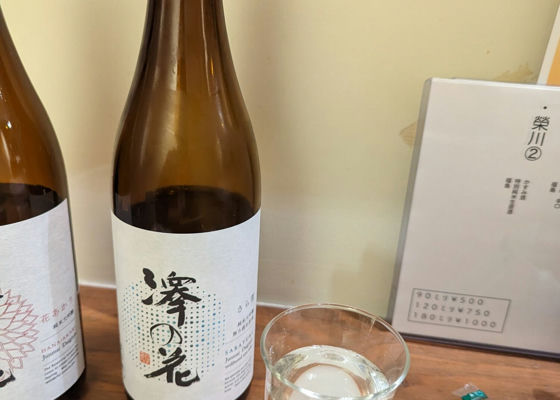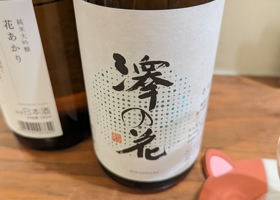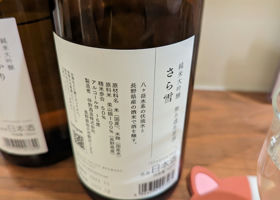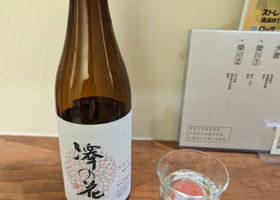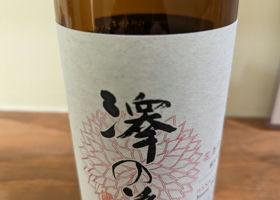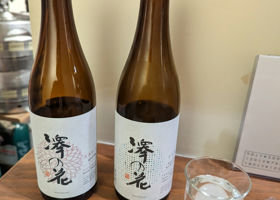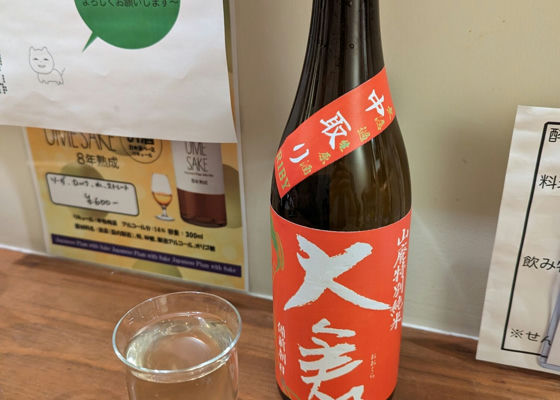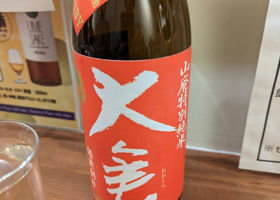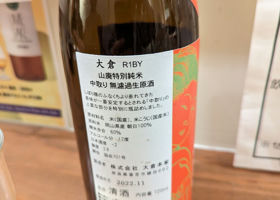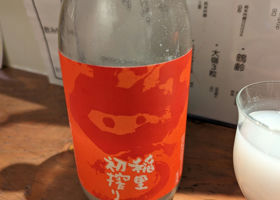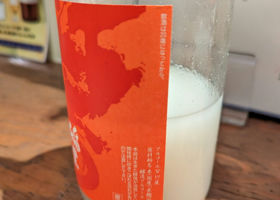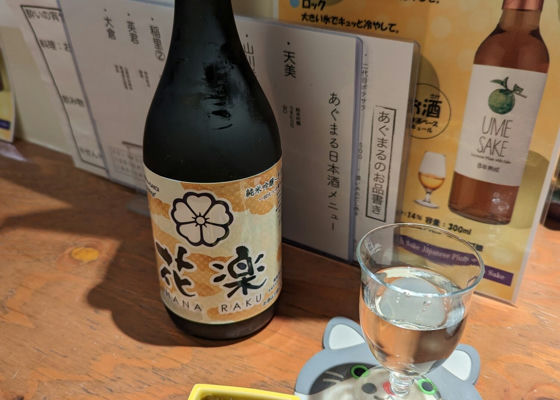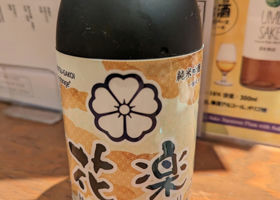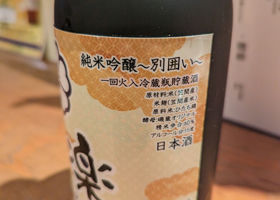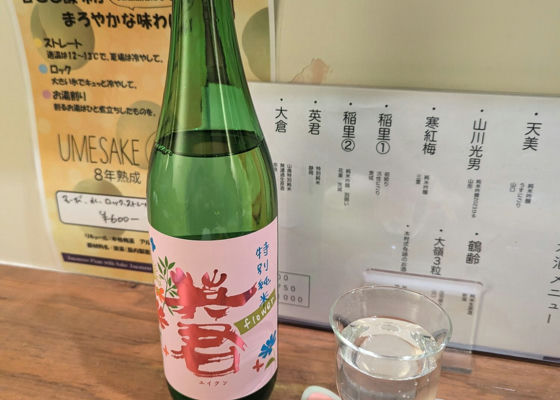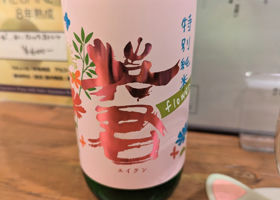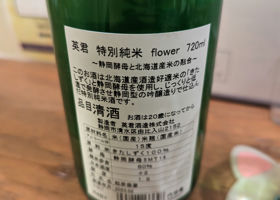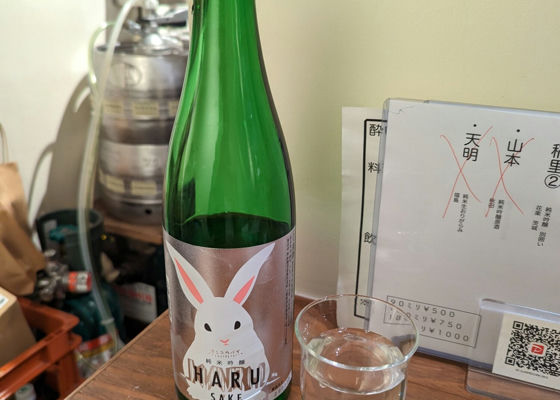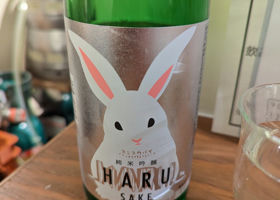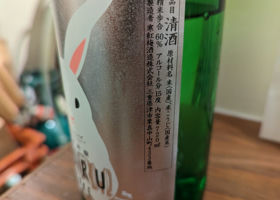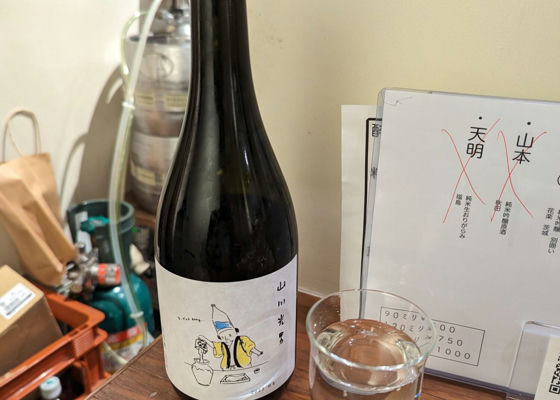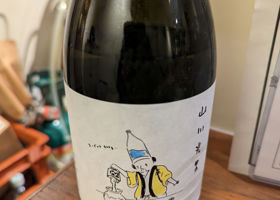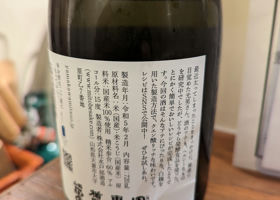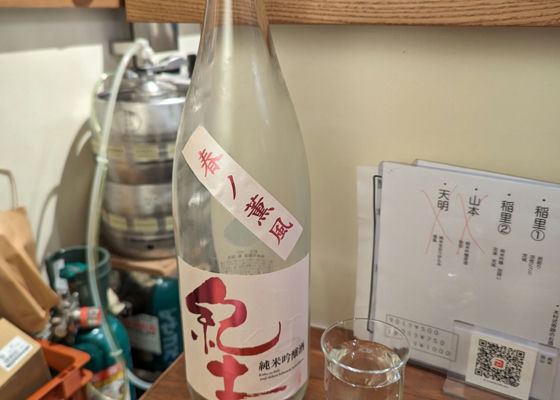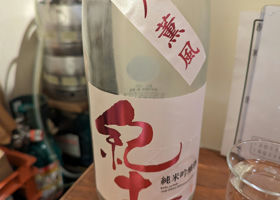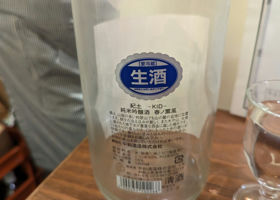Timeline
白木久MIRROR MIRROR純米原酒生酒無濾過 南十字輝7/10
It would be rude to say that this sake is un-Kyoto-like, but it has a modern label.
The name "Mirror Mirror" is the first thing that catches my attention.
It is characterized by the use of black malted rice and malic acid high-producing yeast.
The flavor is also quite a modern type, and the label makes it seem very Ima-ish.
The question remains, then, what is Miller-Miller? Daina特別純米 にごり酒 生酒特別純米生酒にごり酒 南十字輝7/10
Ona's new sake and nigori sake.
While it has the crispness typical of Ona, it is a slightly sweet sake with a fruity aroma.
It has the smoothness of nigori sake, but it is also easy to drink and goes down your throat smoothly.
It was delicious. ジェイ&ノビィHello, Southern Cross Shine 😃.
Ona nigori! It's delicious 😋.
I haven't been able to drink it this season, but I hope I can find you for a drink outside 😊. 南十字輝Good evening, Jay & Nobby!
Ona is a sake brewery in Tochigi Prefecture, which has a lot of sake, but they make honest and delicious sake. Every one of their sake is delicious. The nigori was delicious! I hope you will be able to meet them! 津島屋外伝 OMACHI Perlwein 2023純米 南十字輝7/10
Tsushimaya Gaiden with a cute Siberian Husky.
They are using Omachi this time.
Gaiden is a series brewed with German white wine yeast.
The use of Omachi gave it a complex flavor and a more white wine-like feel.
The low alcohol content makes it easy to drink.
The label also made this sake feel like a real wine. 南十字輝5/10
I've been wanting to try this one for a while.
Craft saké, which is treated as so-called "other brews".
The rice polishing ratio is 92% and the alcohol content is 9 degrees.
It was more grape than I expected, and more juice than I expected.
I thought it would be more of a sake, but it was just as easy to drink as grape juice.
It is amazing that it is so easy to drink with this rice polishing ratio. 南十字輝7/10
The regular ALPHA 1 was the "door to the next chapter", and this DRY is the "key to the next chapter".
I have a feeling that I don't know what I'm talking about, but I think the conceptual makeup is amazingly good.
As the name "DRY" suggests, it is designed to be dry, with no sweetness.
The acidity and fruity aroma typical of Kaze no Mori are retained, and the taste is crisp and clean.
It is a sake that always delights me. 南十字輝6/10
This is a once-heated Junmai Ginjo made with Yamada Nishiki.
As the name implies, this is a hot sake that has been rapidly cooled.
It is a sake that focuses on transparency, so it is very refreshing.
The sweetness and umami come first, and the acidity spreads in the latter half.
It was a sake with a rich taste. Shoryuhoraiきもと純大 雄町49 槽場直詰無濾過生原酒 まめ農園特別栽培米純米大吟醸生酛原酒生酒無濾過 南十字輝6/10
I hear Mame Farm's Omachi is good.
They are located in Kurashiki City, Okayama Prefecture, and are called Mame Farm because they cultivate green manure by planting legumes after rice harvest.
The sake is fresh and has a sweet aroma like berries and white peaches.
It has a lactic acidic aroma and a bitter taste in the latter half, which is a lot of things packed into it.
It is a great value sake. 南十字輝6/10
Shirasugi Sake Brewery is famous for making unusual sake.
The name is also unusual.
They use very little (none?) sake rice in the brewing process. They use almost (not at all?) no sake rice in their sake brewing.
They also use white or black malted rice.
This sake is made with Koshihikari rice and No.4 yeast for shochu.
The fruity aroma of green apple is strong.
And it has a strong sour taste.
It has a modern style, but it is a little peculiar for a sake.
If you try to drink it as a food sake, you may be surprised.
It is such a sake. 南十字輝7/10
Dewazuru's unfiltered unpasteurized sake. 60% Omachi polished rice.
Gorgeous taste, fruity.
The aroma was melon, lychee, and a hint of vanilla.
The second half was full-bodied with a bitter taste, and I was surprised that such a strong sake existed.
I would like to drink it again. 南十字輝8/10
Dewazuru Aizan.
In addition, UT-1, Akita's original yeast, is used.
I hear that sake is not about rice, but when I hear Aiyama, I want to try it.
This sake has a fruity aroma typical of Aizan and a melon-like sweetness.
I like that it also has a softly sour taste. 南十字輝6/10
It's a KURAND sake.
It seems to be a very high spec and expensive one.
But it's difficult to evaluate KURAND sake.
It is fresh and juicy.
The mouthfeel is very gorgeous.
It also has a milky nuance.
It's certainly delicious, but I wonder why it seems a little difficult to appreciate.
南十字輝7/10
Junmai Daiginjo-shu from Sawanohana.
This is an unfiltered raw sake type.
Compared to the hi-ire type, it is fresher and a little gassy.
This one has a stronger aroma, which I prefer.
It is also good to taste a bit of astringency and bitterness. 南十字輝7/10
A seasonal product of Sawanohana.
Junmai Daiginjo-shu made with Miyamanishiki and Akari Ogawa yeast.
Compare with unfiltered raw sake.
The taste was gorgeous and beautiful.
It has a fruity aroma of melon and muscat.
It was a sweet but refreshing sake. 南十字輝7/10
Okura's special junmai made with Bizen Asahi from Okayama Prefecture.
With an alcohol content of 17%, it has a fairly robust flavor.
It also has a thickening effect.
Okura is said to have many of this type.
The mouthfeel is heavy, but the fruity aroma comes afterwards. 南十字輝6/10
Inazato's first Shiborisake.
It is bottled as it is in its raw state, and is nigori sake, which is the second fermentation in the bottle.
It had been a little while since the first sip, so the fizziness had settled down, but I enjoyed the slightly sharp taste.
It was creamy and rich.
I would like to pair it with fried food. 南十字輝5/10
This sake is treated as Inazato's separate package. It is said to be a limited edition sake.
This is my first time to drink Inazato itself, so I don't understand the concept.
It is a fresh-brewed sake made from Hitanishiki produced in Ibaraki Prefecture.
It has a clean taste with a slight fruity aroma.
In the photo, it is paired with mozuku, a strong flavor, but it was a good match, so it could be paired with just about anything. 南十字輝6/10
Eikun's Spring Sake is made with Kitashizuku from Hokkaido.
It uses Shizuoka yeast 5MT-14, a yeast that is not very familiar to most people.
Although it is called "flower," the taste is rather dry.
It reminded me of a flowery aroma, but it was a robust sake that matched well with a meal. 南十字輝6/10
It's like a spring sake!
The rabbit label is cute.
I didn't open my mouth, so I could only feel a slight sense of bubbles, but I knew it was a refreshing sake.
It has a strong sweetness with a white peach aroma.
It fits the image of the cute label, and people who like rabbits will like this sake.
I'll leave it at that. 南十字輝6/10
The first Mitsuo Yamakawa of 2023.
This time the brewer is the Mitobe Brewery.
There seems to be a story behind every bottle, and this time it is about a fat Mitsuo Yamakawa who wakes up healthy.
It was brewed with an eye toward pairing with yogurt-based dishes, and the use of white malted rice gave it a strong citric flavor.
This kind of brewing is interesting.
There is also a recipe video on YouTube, and they are well aware of the concept and promotion.
I think this is a sake I would like to see spread more widely. 南十字輝7/10
Spring sake from Kido.
It has a robust aroma and a slightly dry taste.
It is easy to drink as a food sake.
Tempura would probably go well with it.
It is about to be served with cod sprouts, so this sake made me want to try tempura. RecommendedContentsSectionView.title
